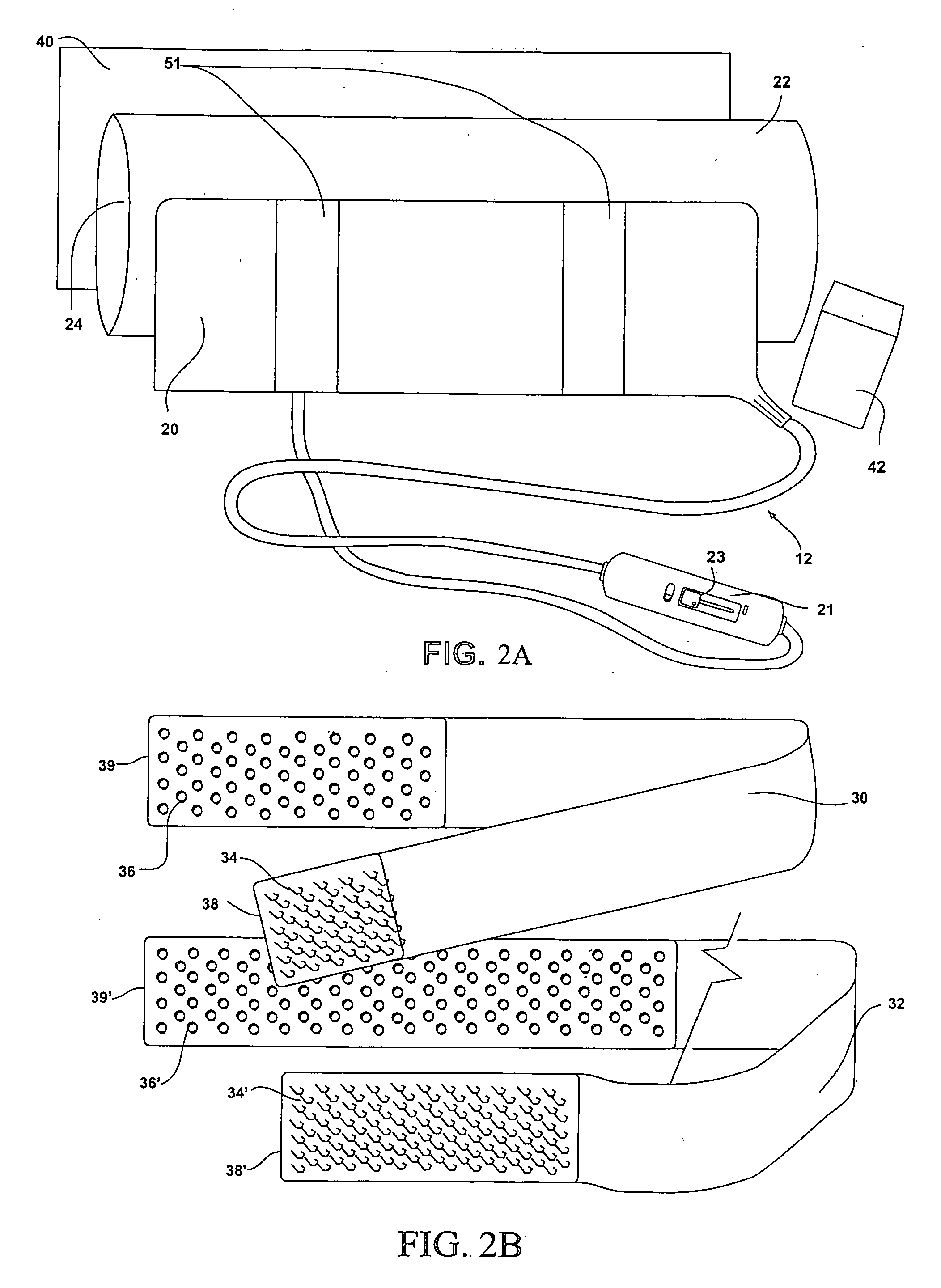Body tissue and skin treatment method using pulsing heating pad and topical cream
a heating pad and skin technology, applied in the field of body tissue and skin treatment methods using pulsing heating pads and topical creams, can solve the problems of burning of the skin, no existing pain treatment method permits the application of intense heat to the skin surface, and the use of heating devices and analgesic creams was not recommended in combination,
- Summary
- Abstract
- Description
- Claims
- Application Information
AI Technical Summary
Benefits of technology
Problems solved by technology
Method used
Image
Examples
Embodiment Construction
[0044] Step 1. Apply a sufficient quantity of the invented analgesic or similar cream to the skin over an injured area of the body.
[0045] Step 2. Apply a heating device to the injured area on which has been placed the topical cream.
[0046] Step 3. Activate the heating device and set the device to its lowest temperature setting (i.e. LOW). At this setting, the temperature of the device heating elements preferably cycles between peaks of generally 118-120.degree. F. and troughs of about 112-114.degree. F. Each cycle (from one peak to the next) preferably requires approximately 4 minutes.
[0047] Step 4. After treatment at the lowest device temperature setting, as outlined above for approximately 20-45 minutes, adjust the device to a higher setting (i.e. MEDIUM). At this setting, the temperature of the heating elements preferably cycles between peaks of generally 124-127.degree. F. and troughs of about 116-118.degree. F. in the similar period as is used for the LOW setting, for example, c...
PUM
| Property | Measurement | Unit |
|---|---|---|
| Angle | aaaaa | aaaaa |
| Angle | aaaaa | aaaaa |
| Temperature | aaaaa | aaaaa |
Abstract
Description
Claims
Application Information
 Login to View More
Login to View More - R&D
- Intellectual Property
- Life Sciences
- Materials
- Tech Scout
- Unparalleled Data Quality
- Higher Quality Content
- 60% Fewer Hallucinations
Browse by: Latest US Patents, China's latest patents, Technical Efficacy Thesaurus, Application Domain, Technology Topic, Popular Technical Reports.
© 2025 PatSnap. All rights reserved.Legal|Privacy policy|Modern Slavery Act Transparency Statement|Sitemap|About US| Contact US: help@patsnap.com



